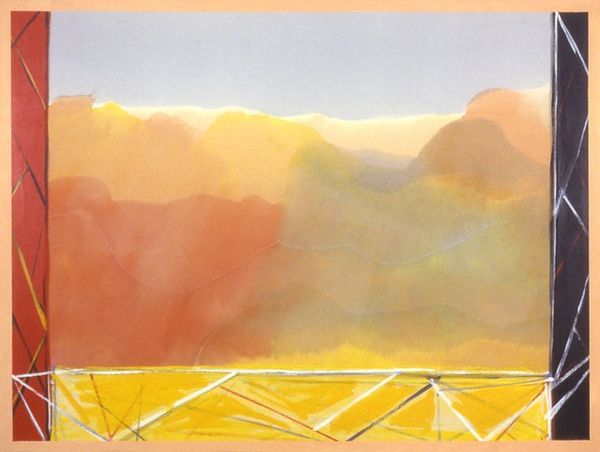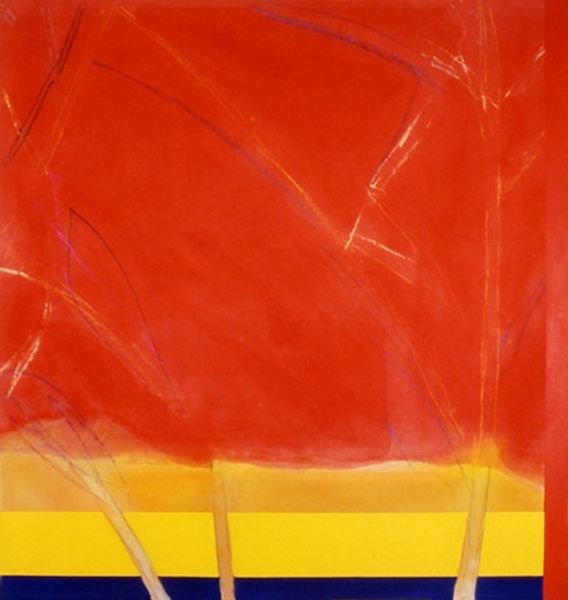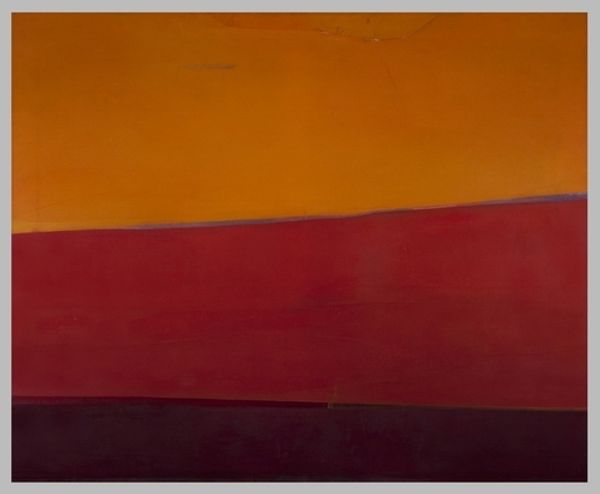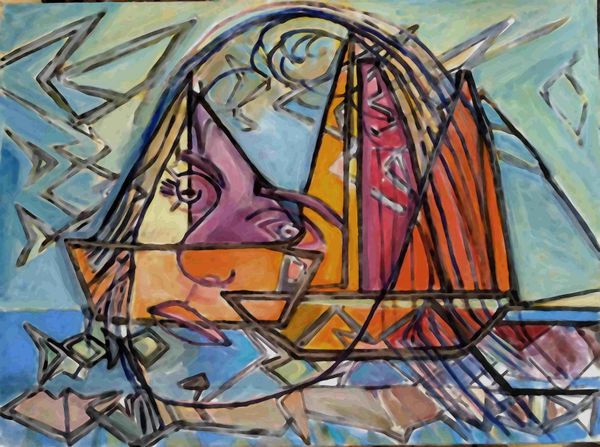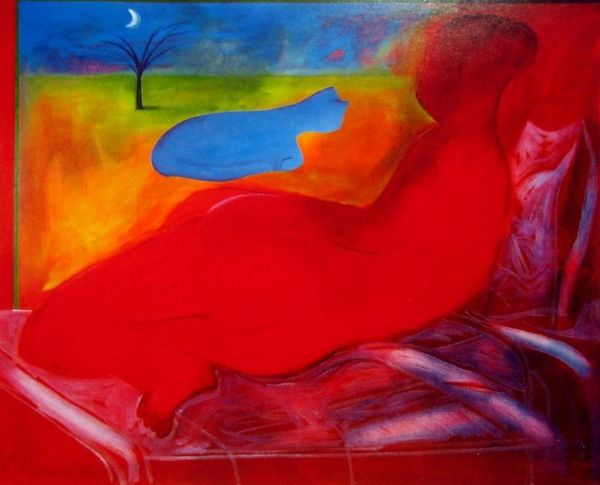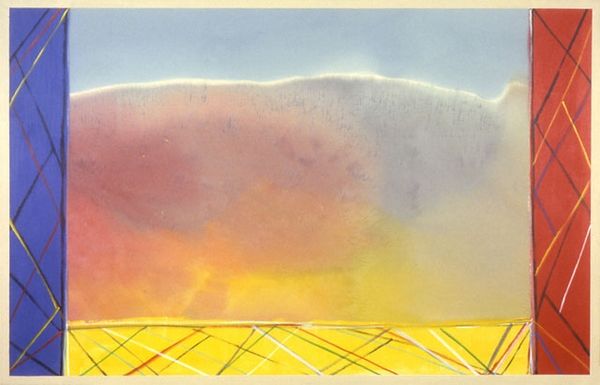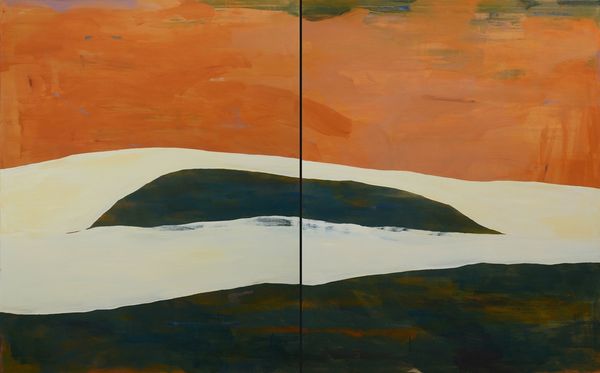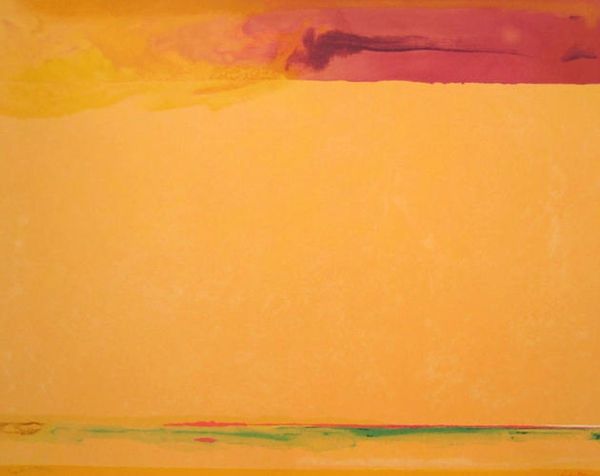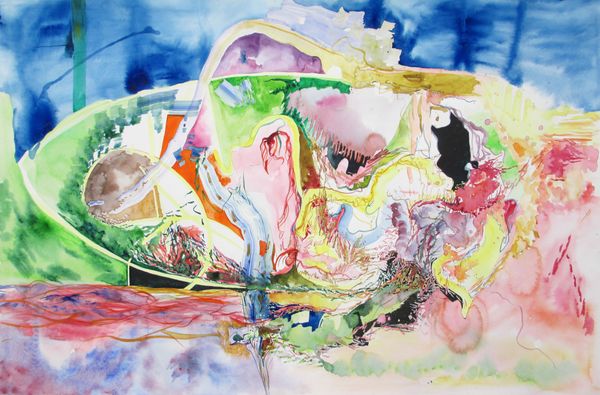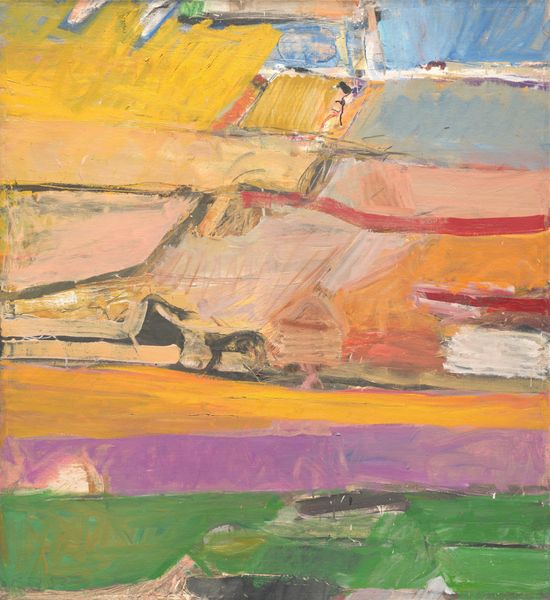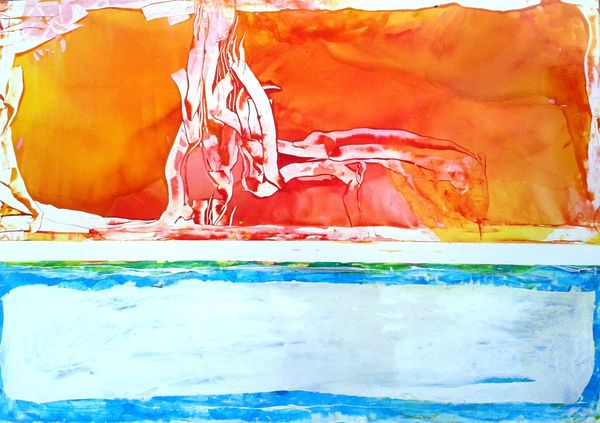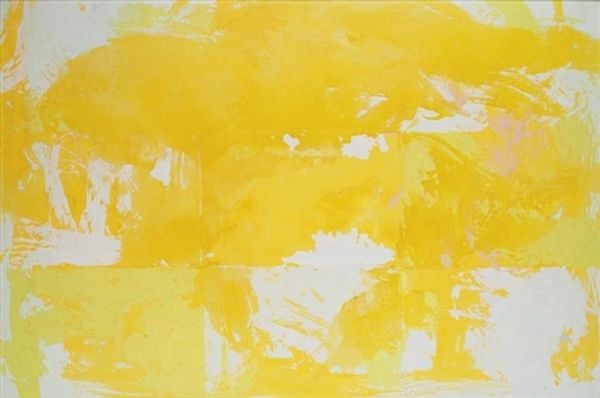
Copyright: Ronnie Landfield,Fair Use
Curator: Here we have Ronnie Landfield's "Thunder For Camille Pissarro," painted in 1986. Editor: My first thought is 'fiery.' There's such a dynamism here with the bold use of color and those fractured geometric shapes, but the eye definitely lingers on the layering of that very vibrant yellows and oranges. Curator: Landfield’s work after the 1960s placed him within the Lyrical Abstraction movement, which sought to expand on the legacies of Abstract Expressionism. He's clearly wrestling with that lineage in "Thunder for Camille Pissarro"– specifically, the machismo and the institutional narrative of "action painting" as it related to those legacies. You see the energetic brushwork. But, like other painters of this style, there's a clear interest in landscape as a key theme in the overall composition. Editor: Absolutely. It's almost like he's deconstructing a sunset, stripping it down to its raw elements. Looking closely, the acrylic medium gives a textured density, which contrasts those thin, scumbled washes he uses to evoke atmosphere. You can almost feel the layering process here. Those repeated linear forms almost appear to have been built by hand– maybe stencils, maybe just years of careful work, but certainly by the repeated gesture. There’s such care and consideration evident, a contrast to how these paintings were consumed. Curator: And I wonder if he's gesturing toward something deeper through the use of abstraction. Color Field painting became tied to corporate patronage, particularly by figures like David Rockefeller who funded public installations by painters, further alienating painting's broader political significance. What do you see beyond pure abstraction? Editor: I get the sense that he is not trying to recreate the visual representation, but attempting to present the feeling itself. And again, going back to your initial point, challenging painting itself by pointing out its potential co-optation in broader institutional networks. Curator: Exactly, so it's about asking questions, prompting dialogue, not dictating a singular narrative, so to speak. Editor: Agreed. A potent demonstration of how material exploration and formal construction are so closely tied with the social life of images.
Comments
No comments
Be the first to comment and join the conversation on the ultimate creative platform.
